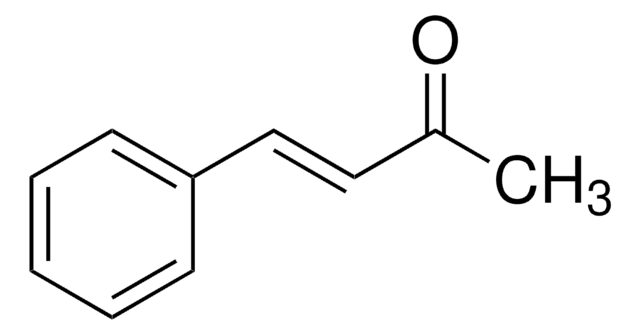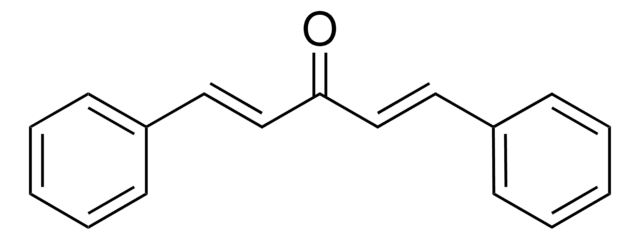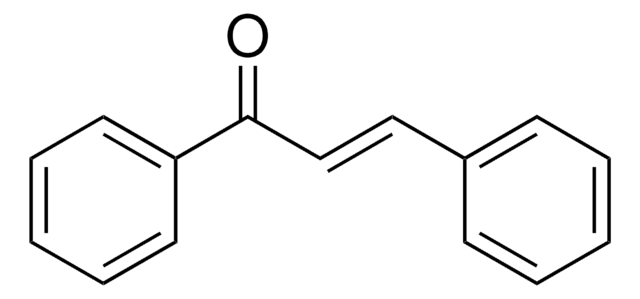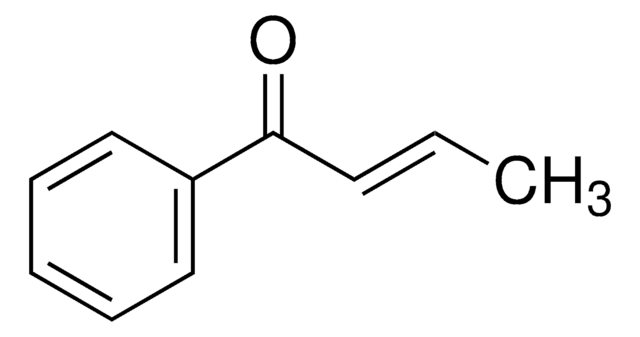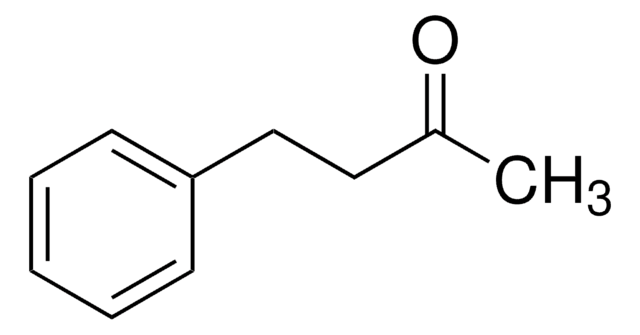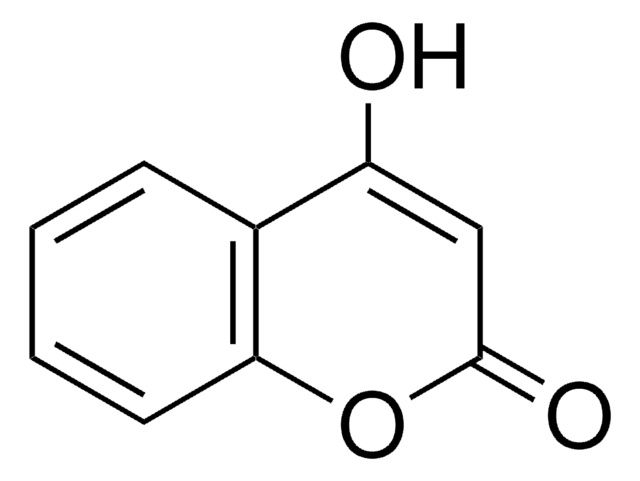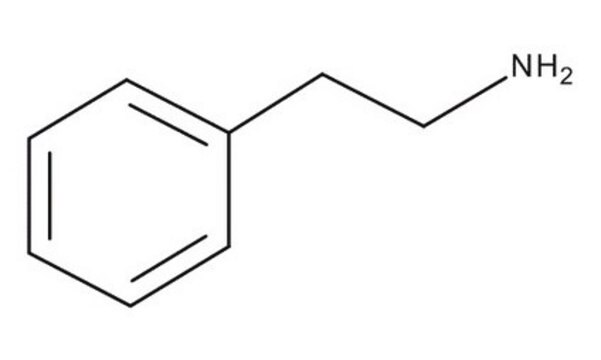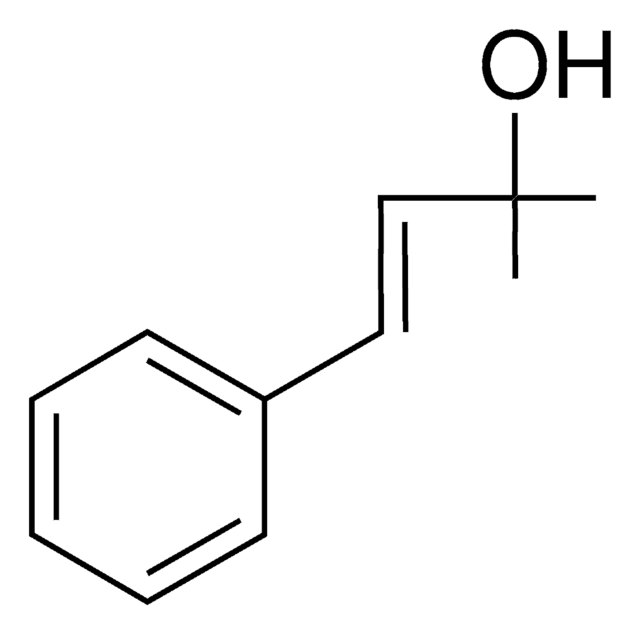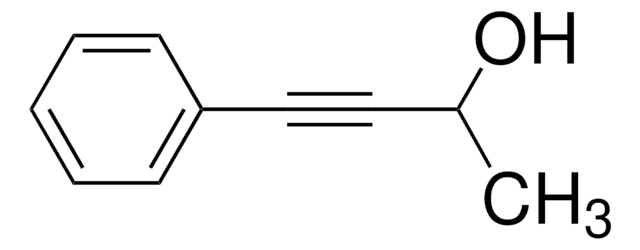147885
4-Phenyl-3-buten-2-one
99%
Sinonimo/i:
Benzalacetone, Benzylideneacetone, Methyl styryl ketone
About This Item
Prodotti consigliati
Tensione di vapore
0.01 mmHg ( 25 °C)
Livello qualitativo
Saggio
99%
Stato
solid
P. ebollizione
260-262 °C (lit.)
Punto di fusione
39-42 °C (lit.)
Solubilità
alcohol: freely soluble
benzene: freely soluble
chloroform: freely soluble
diethyl ether: freely soluble
petroleum ether: very slightly soluble
water: very slightly soluble
Stringa SMILE
[H]\C(=C(\[H])c1ccccc1)C(C)=O
InChI
1S/C10H10O/c1-9(11)7-8-10-5-3-2-4-6-10/h2-8H,1H3/b8-7+
BWHOZHOGCMHOBV-BQYQJAHWSA-N
Cerchi prodotti simili? Visita Guida al confronto tra prodotti
Categorie correlate
Descrizione generale
Avvertenze
Warning
Indicazioni di pericolo
Consigli di prudenza
Classi di pericolo
Skin Irrit. 2 - Skin Sens. 1
Codice della classe di stoccaggio
11 - Combustible Solids
Classe di pericolosità dell'acqua (WGK)
WGK 2
Punto d’infiammabilità (°F)
253.4 °F - closed cup
Punto d’infiammabilità (°C)
123 °C - closed cup
Dispositivi di protezione individuale
dust mask type N95 (US), Eyeshields, Faceshields, Gloves
Scegli una delle versioni più recenti:
Possiedi già questo prodotto?
I documenti relativi ai prodotti acquistati recentemente sono disponibili nell’Archivio dei documenti.
I clienti hanno visto anche
Global Trade Item Number
| SKU | GTIN |
|---|---|
| 147885-1KG | |
| 147885-250G | 4061838737700 |
| 147885-5G |
Il team dei nostri ricercatori vanta grande esperienza in tutte le aree della ricerca quali Life Science, scienza dei materiali, sintesi chimica, cromatografia, discipline analitiche, ecc..
Contatta l'Assistenza Tecnica.